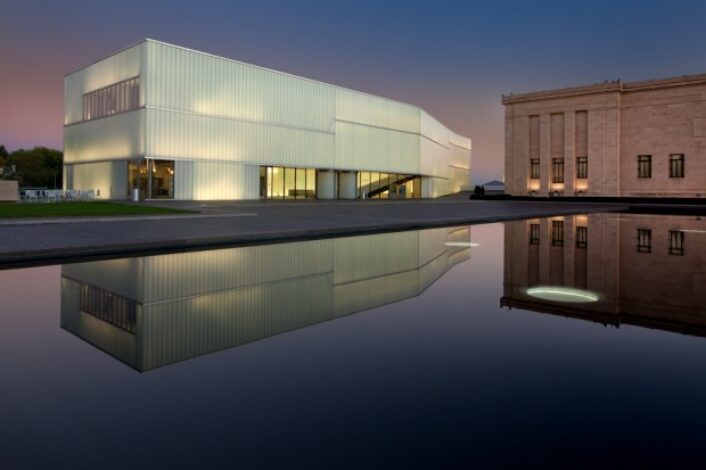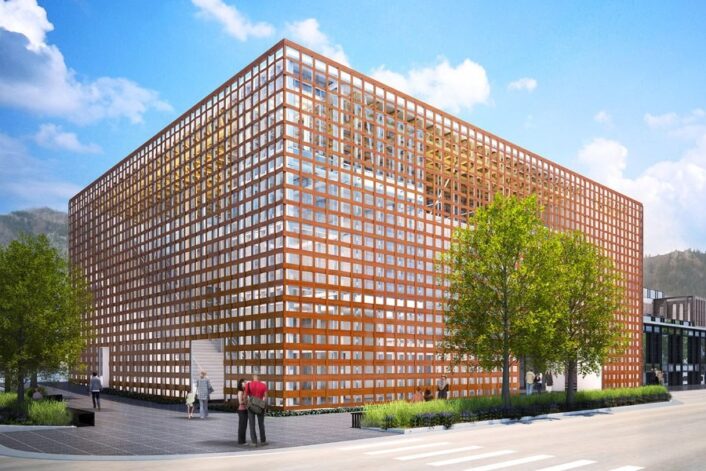Architecture
Wisconsin’s Art Preserve
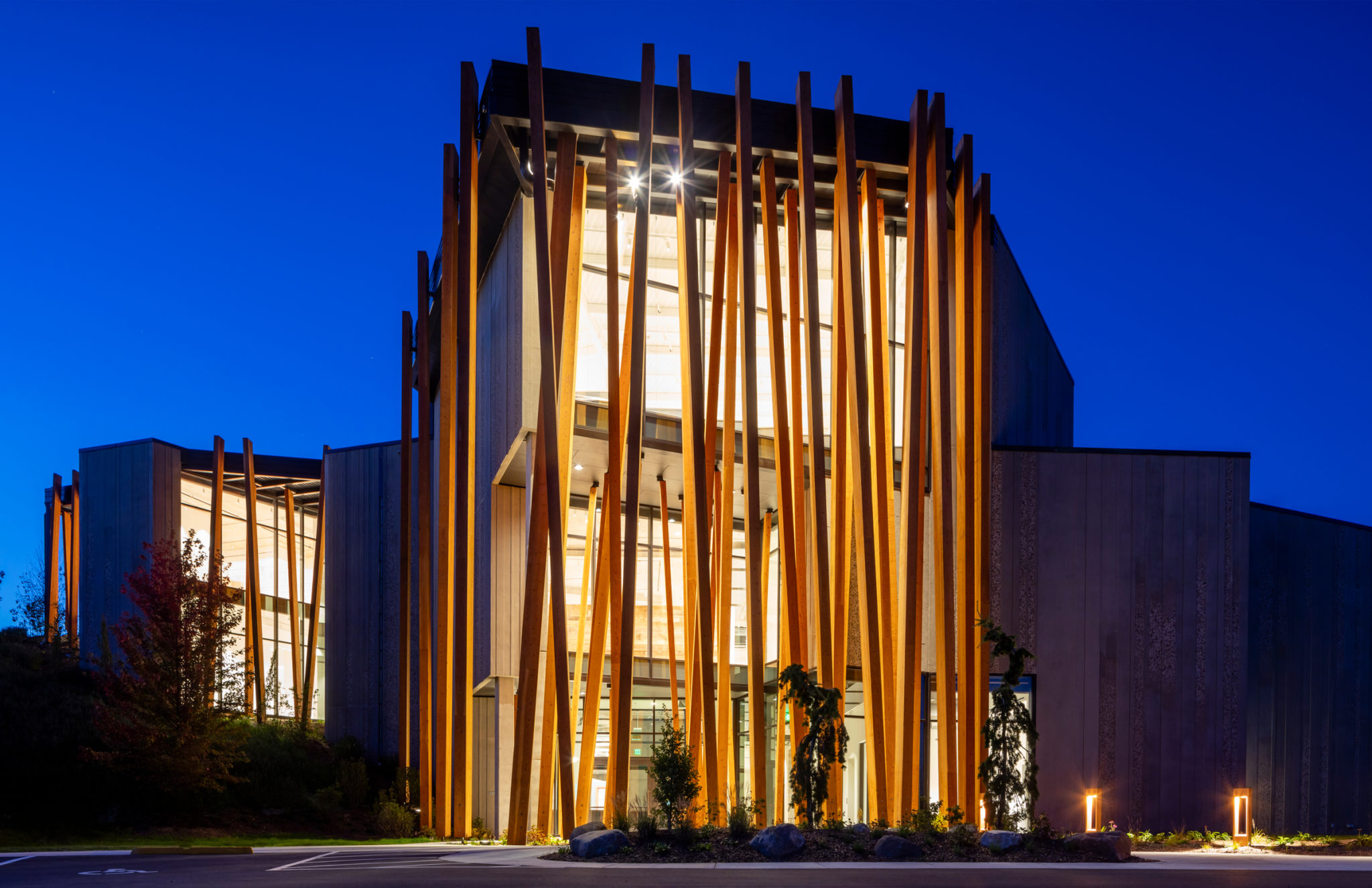
The museum is in Sheboygan, Wisconsin and it opened in June in honor of Ruth DeYoung Kohler who passed away last November. The elder Mrs. Kohler was an arts advocate for her entire lifetime. She ran the John Michael Kohler Arts Center for more than forty years.
Image courtesy of: Milwaukee Magazine, photographed by: Durston Saylor
Finally last June, after delays due to the pandemic and additional unrelated reasons, the Art Preserve of the John Michael Kohler Arts Center opened to much fanfare. Designed by Michael M. Moore and Denver-based Tres Birds, the structure appears as semi-shielded by giant timbers that soar into the sky and reach a height beyond the building’s roof. Wooden beams range anywhere from 20-50 feet tall and lean, tip, and tower like a forest. Some have questioned… is this a structure or a sculpture?
The difference between the Art Preserve and other museums of its kind is that it focuses on entire environments verses individual objects. Working in cooperation with the Kohler Foundation, a not-for-profit known for rescuing art sites, the pieces acquired and preserved come from thirty different environments.
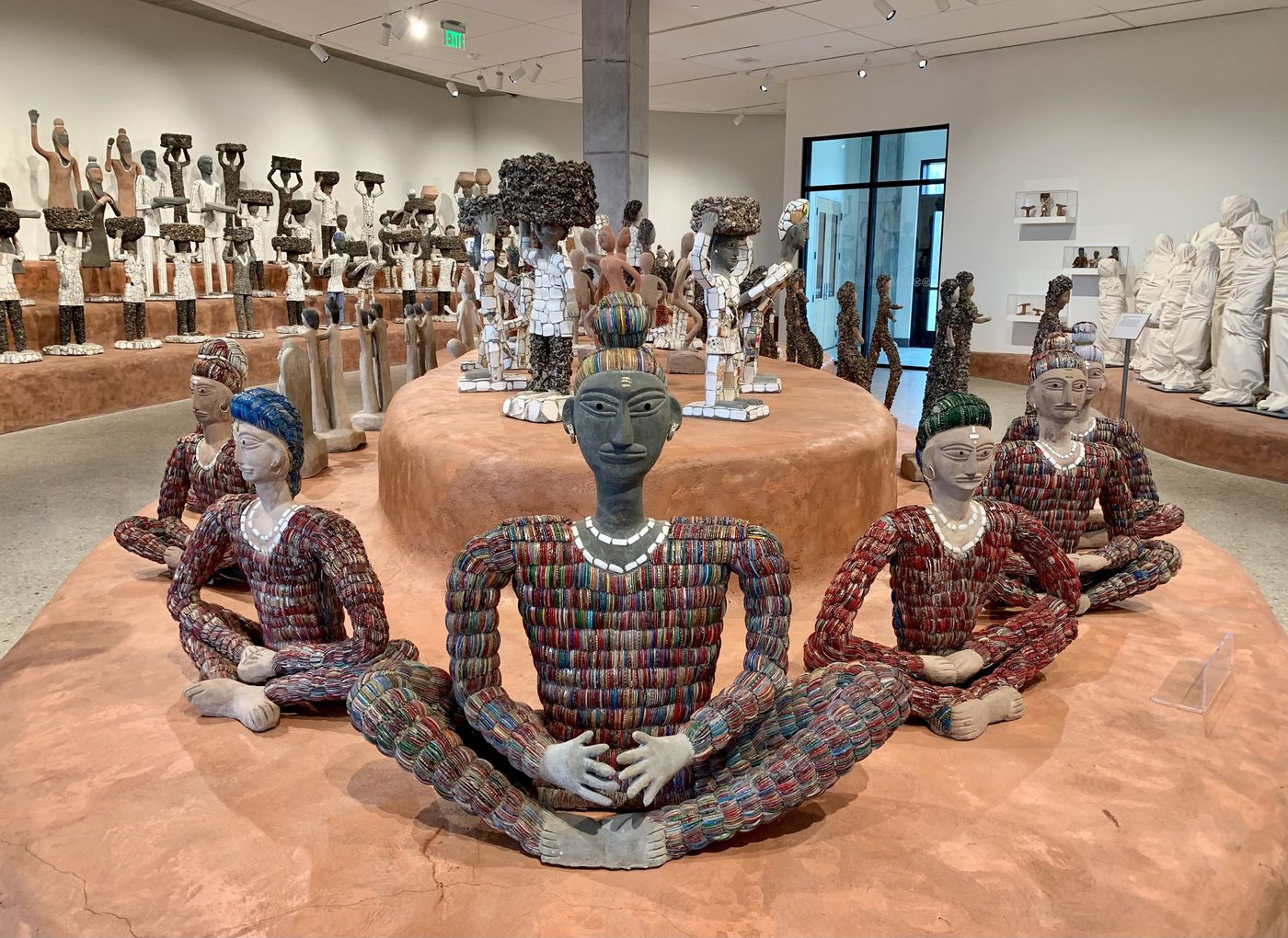
Nek Chand’s collection on display. The artist, a road inspector in India, built a make-believe kingdom of people and structures on unused city-owned land.
Image courtesy of: Chicago Tribune, photographed by: Mary Bergin
The Art Preserve (courtesy of The New York Times article by Mary Louis Schmacher), “is the first museum in the country to focus on artists known as “environment builders,” whose worldviews take immersive and physical form, and who often turn their entire homes into works of art.”
This unique concept is a way for people to “walk into somebody’s vision.” Here, the artist’s vision is first and foremost. The idea is that you can only get a true understanding of who someone is by seeing the layers that come into play in his or her collection. Appreciating the organic process of this type of art simply is not possible when you are only able to view a handful of works.
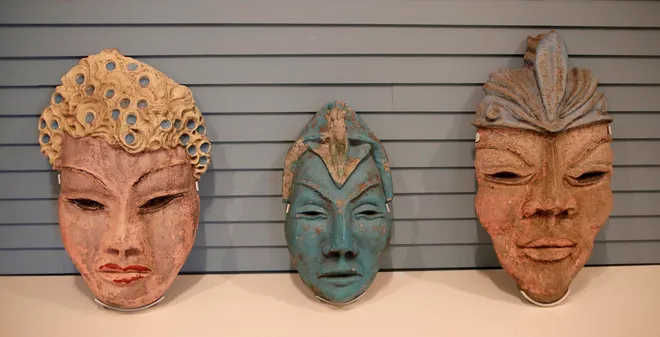
A trio of clay masks made by Eugene von Bruenchenhein.
Image courtesy of: Milwaukee Journal Sentinel
The three-story building is filled with 25,000 objects and the the 56,000-square-foot structure sits on 38 acres of former farmland a short drive away from the Kohler Art Center in downtown Sheboygan. The first floor centers on the origin of the arts preserve and the “rescue of artist-built environments in the Upper Midwest.” As you enter, a functioning bar honors one of Ruth DeYoung Kohler’s earliest discoveries… Fred Smith’s tavern in Phillips, Wisonconsin.
Kohler came upon the idea of preserving environments after a fateful 1983 stop at Eugene von Bruenchenhein’s minuscule house. It was a police officer that suggested visiting EVB (as he is known) was worth the time. The suburban Milwaukee home was filled with apocalyptic paintings, structures constructed from chicken bones, and clay crowns. Kohler explains, “It was an originality that I hadn’t seen before.” About his remaining notebooks and writings, she continues, “Each one, for me, has a voice that tells a slightly different story.”
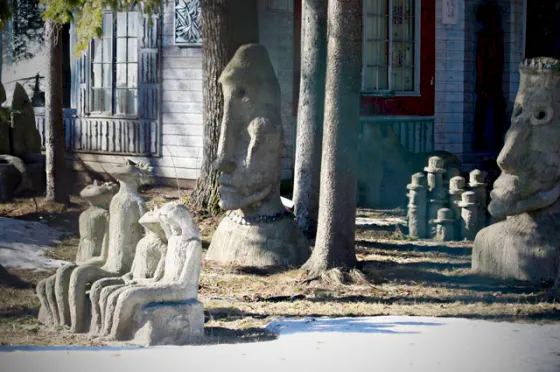
Once Mary Nohl’s family passed away and the family home became her own, the artist began to transform her environment. For over thirty years, she altered every surface both inside and outside the house. She painted walls, ceilings, rugs, furniture, and even the telephone. On the outside, she was forced to build a fence because of the nightly vandalism that occurred.
Image courtesy of: Lori Kennedy Quilts
There are some very interesting stories that were saved due to the Art Preserve’s persistence and perseverance. More than thirty years were spent in hopes of rescuing and rehabilitating Mary Nohl’s art and reputation. Her home, near Lake Michigan, was named the “witch’s house” by locals who did not understand her work. Nohl carved wooden faces and turned them to face each other as though in conversation. The faces were made from concrete with stone eyes and wide open smiles… a little creepy for some.
The importance of Nohl’s environment is amplified by the fact that it is one of just a few remaining environments produced by a woman. One of the main factors behind this is that traditionally, both women and artists of color were less likely to own property that could be transformed into art. It is certainly inspirational that in 2012, Kohler decided this was a cottage worth owning and thus, saving.
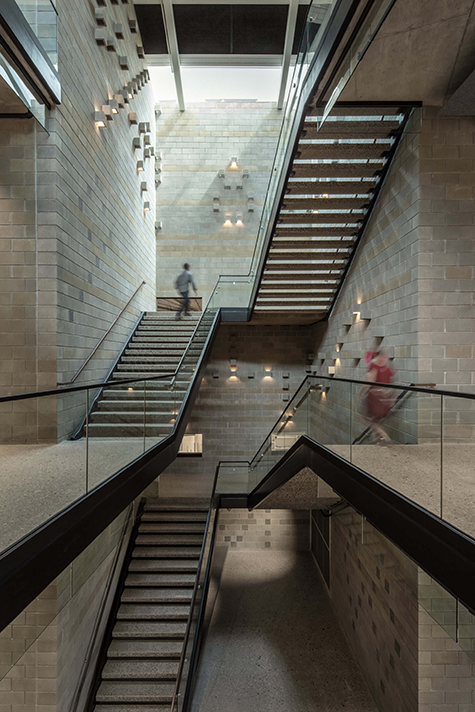
The staircase was planned as a simple design that would not take away from the curated environments within.
Image courtesy of: The Architect’s Newspaper, photographed by: James Florio
Tres Birds, the architecture firm that was instrumental in developing a design that would appeal to the Art Preserve’s focus, made sure that the structure was made of elements that mimic the surrounding area near the Sheboygan River Basin. Recreating exhibition spaces that are similar to the original spaces that the works were created in was the most important assignment.
As timber planks welcome the visitors underneath the building’s concrete panel facade, the environments on the first floor are devoted to the works of “famous Wisconsinites” within the genre. The third floor is home to the most intact environments; in such, these are the largest sites. Filled with light from skylights, the art environments that are transported are often complicated in provenance. Laura Bickford, the Art Preserve’s curator told The New York Times, that relocating whole or in-part environments can be an “act of violence.” This is, in part, because there are often issues with property rights and the long-term care that often makes saving them “as they are” impossible.
